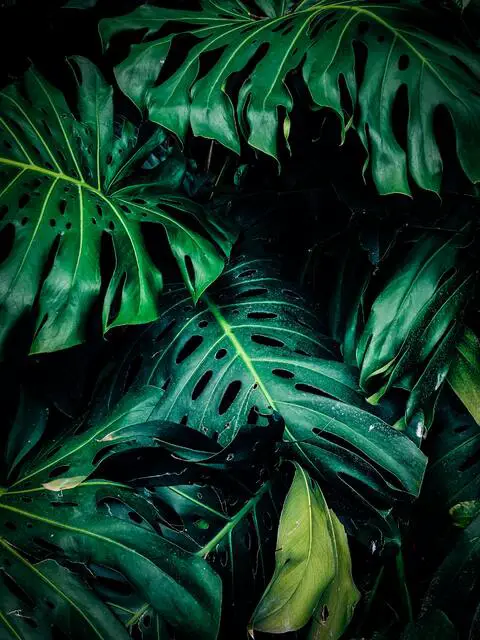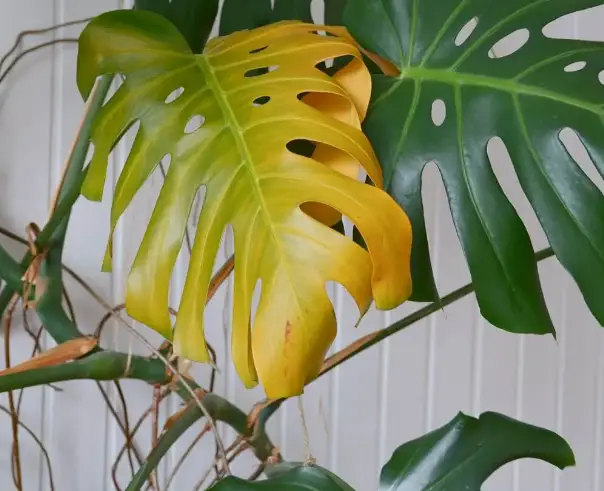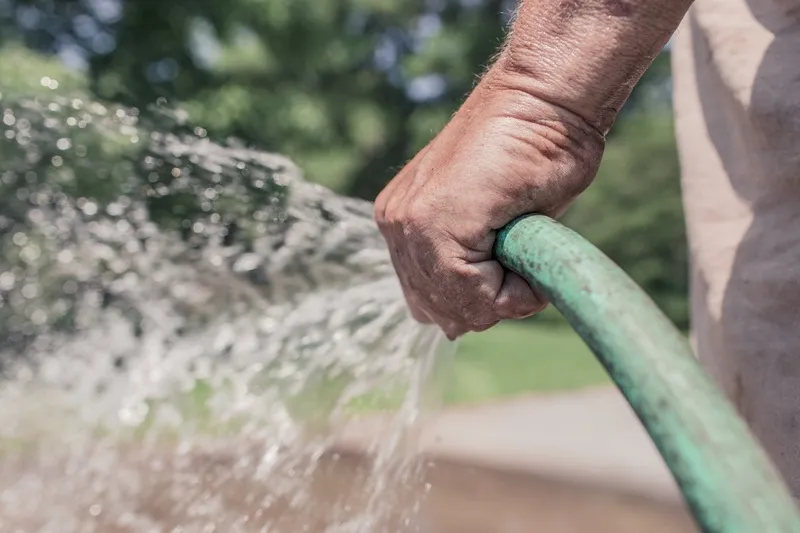Monstera and Pet Safety: Essential Guide for Plant Lovers
Ever caught your furry friend munching on a leaf from that beautiful Monstera plant? If so, you’re not alone. As pet parents and houseplant enthusiasts, we often walk this tightrope of cohabitation.
You see, Monstera plants can be like the Sirens of Greek mythology – alluring yet dangerous to our unsuspecting fur babies. Hidden within their vibrant green leaves are calcium oxalate crystals which make these plants toxic for pets if ingested.

This blog post is here to help you navigate this tricky landscape where lush indoor jungles meet curious cats and dogs. We’ll dive into why Monsteras hold danger for pets, how to spot symptoms of toxicity in your four-legged pals and what steps need to be taken afterwards.
Plus, we’ve lined up some solid tips on how to keep your pets safe around other usual suspects.
Table of Contents:
- Understanding the Toxicity of Monstera Plants to Pets
- Recognizing Symptoms and Seeking Treatment for Pet Ingestion of Monstera Plants
- Keeping Pets Safe Around Toxic Houseplants
- Identifying Other Common Toxic Houseplants for Pets
- Training Pets Around Monstera Plants
- Managing a Harmonious Environment with Pets and Plants
- Expert Advice on Pet Safety and Monstera Plants
- FAQs in Relation to Monstera and Pet Safety
- Conclusion
Understanding the Toxicity of Monstera Plants to Pets
It’s no secret that we, as plant parents, love our leafy companions. But what happens when our fur babies get a little too curious? Enter the monstera deliciosa – a popular houseplant known for its beautiful split leaves but also for its toxicity towards pets.
The Science Behind Monstera Plant Toxicity
The danger lies within these plants’ unique structure. The cause of concern is calcium oxalate crystals found in all parts of the monstera plant. When ingested by dogs or cats, it can lead to oral irritation and excessive drooling due to skin irritation caused by these crystals. ASPCA animal poison control notes that other symptoms include vomiting and loss of appetite.
This toxic reaction isn’t limited only to pets; even humans are susceptible. If you’ve ever handled a damaged or pruned monstera leaf without gloves on, you might have experienced some mild skin irritation yourself.
In more severe cases where large quantities are consumed, it could potentially harm dogs with kidney damage according to several studies on poisonous plants like monsteras. It’s always a good idea then for pet owners having such toxic houseplants around their homes, including monsteras, to watch out closely if they notice their dog eating any part thereof.
To prevent your beloved pup from chewing on this mildly toxic plant though, you may want to consider placing your treasured greenery up high where curious noses can’t reach them. You might also introduce safer indoor plants into your collection like spider plants, boston ferns, and parlor palms which pose no threat at all. They’re considered non-toxic alternatives to monstera plants and are pet-safe too.
If you’re a monstera plant lover, it’s vital to know this risk for not just our pets’ wellbeing, but ours too. But don’t let that put you off these gorgeous tropicals. The trick is staying aware and vigilant, making sure our homes stay safe for everyone.
Monsteras are a treat for the eyes but can be toxic to pets due to calcium oxalate crystals. If ingested, they cause symptoms like oral irritation and vomiting. Even humans aren’t immune. But don’t let that deter you from owning these beautiful plants. Just keep them out of reach or consider pet-safe alternatives like spider plants or parlor palms.
Recognizing Symptoms and Seeking Treatment for Pet Ingestion of Monstera Plants
If your fur babies show signs like oral irritation, swelling around the mouth, or excessive drooling, it’s possible they’ve had a bite of your monstera plant. The culprit behind these symptoms are calcium oxalate crystals found in all parts of the monstera plants.
In large quantities, this toxic plant can potentially cause kidney damage in dogs. This is why pet owners should make sure to keep an eye out for vomiting or loss of appetite as well – both clear indicators that your dog has ingested something harmful.
Spotting the Signs Early
The first sign you might notice if your dog eats a Monstera leaf could be difficulty swallowing due to throat swelling. Your pet may also start pawing at their face or even experience mild skin irritation.
This doesn’t mean every nibble will lead to severe life-threatening conditions, though. The toxicity level largely depends on how much was eaten and what part of the plant was consumed – but prevention is always better than cure.
Moving Swiftly: When It’s Time To Seek Help?
If you suspect that your pet has been snacking on a Monstera Deliciosa leaf despite all efforts otherwise, don’t panic. But do remember time plays a crucial role here; swift action can help prevent any further harm from occurring. If there are clear indications such as constant pawing at the mouth after eating monstera plants, then consider reaching out to Animal Poison Control. They provide valuable guidance about next steps based on specific cases, including advice about inducing vomiting when necessary (only under veterinary supervision).
Preventive Measures: A Monstera Smell That Dogs Leave Alone?
You adore your greenery and you’re fond of your furry friends. So let’s find a way to make them coexist peacefully. Many pet owners have found success with positive reinforcement training techniques.
On a brighter note, most dogs aren’t too keen on the scent of monstera plants.
When you notice symptoms like mouth swelling or drooling in your pet, it could mean they’ve taken a bite of a Monstera plant. These plants carry toxic calcium oxalate crystals that can lead to kidney damage if ingested in big quantities. Early signs are trouble swallowing and pawing at the face. If you think they’ve eaten some, don’t wait – get in touch with Animal Poison Control right away for help. Always remember, prevention is key.
Keeping Pets Safe Around Toxic Houseplants
We love our fur babies as much as we love our plant collection. But when it comes to monstera plants, these two passions can clash.
The problem? Monsteras contain calcium oxalate crystals that are mildly toxic if ingested by pets or even small children. In fact, many popular houseplants including Philodendron (Monstera), Syngonium, ZZ Plant etc., pose the same threat to both humans and pets. ASPCA’s database for pet owners provides a comprehensive list of such toxic and non-toxic plants.
Spatial Planning Tips for Pet Safety
A little bit of spatial planning can make sure your beloved Monstera deliciosa doesn’t harm dogs in your home. The first step is positioning – place these green beauties out of reach from curious paws or noses.
You could use high shelves or hanging pots where dogs leave them alone because they’re simply inaccessible. A tall stand might work too. This not only keeps your leafy friends safe but also adds a unique design element to your space.
Consider using protective barriers around large floor-standing plants like Monsteras – especially if you have particularly adventurous four-legged friends who aren’t deterred by heights. These barriers need not be an eyesore; there’s plenty of stylish indoor fencing options available online which blend seamlessly with most décor styles.
Pets’ Behavior Modification Techniques
Beyond rearranging furniture, consider training techniques to discourage plant ingestion altogether. Positive reinforcement goes a long way here – reward Fido every time he ignores your plant collection.
It is wise to supply a range of toys and chewables that are suitable for pets, so they don’t become tempted to munch on their houseplants out of boredom. Some owners have even found success with deterrent sprays – the bitter taste makes pets think twice before biting into plants again.
The Importance of Early Detection
Even with all the precautionary measures taken, it is still essential to detect potential plant-biting problems early on.
Keep your beloved pets and plants safe by placing monsteras out of reach, thanks to their slight toxicity. Jazz up safety with style using high shelves or imaginative barriers that mesh well with your decor. Praise your furry friends when they give the cold shoulder to plants, offering them pet-friendly toys as other options. But always keep an eye out for early signs of plant issues, even if you’re cautious.
Identifying Other Common Toxic Houseplants for Pets
Besides the Monstera, there are a variety of other common indoor plants that can pose threats to your fur babies. It’s important as a plant parent to know these potential hazards in order to keep your pets safe.
The Hidden Dangers in Your Plant Collection
A popular houseplant option is the Syngonium, often admired for its vibrant foliage. But beware; it’s one of those toxic plants that could harm dogs and cats alike if ingested due to high levels of calcium oxalate crystals.
The ZZ Plant with its waxy leaves might add aesthetic appeal but it comes at a cost – this plant too contains significant amounts of calcium oxalate which can cause oral irritation and difficulty swallowing in our beloved pets.
Another deceptive beauty is the Snake Plant. Despite being hailed as an easy-to-care-for indoor plant, it’s considered toxic because like others on this list, has large quantities of calcium oxalates hiding beneath its attractive exterior.
Risky Exotics: Bird Of Paradise And Jade Plants
If you’ve got exotic tastes when curating your indoor garden, take heed. The striking Bird Of Paradise isn’t such good news for curious children or nibbling pups—it packs more than just visual punch with toxins capable of causing skin irritation or even more severe life-threatening conditions if consumed in large amounts.
Jade Plants may be symbols of luck and prosperity but they’re not so fortunate for our four-legged friends. Ingesting parts from these succulents can result unripe fruit-like symptoms including vomiting and depression – certainly not what we want for our loyal companions.
Poisonous Ferns And Aloes
Fern enthusiasts should think twice before adding the Asparagus Fern to their collection. It’s one of those plants toxic enough to cause severe skin irritation and gastrointestinal issues in pets.
While Aloe is renowned for its medicinal properties, it’s not safe if your dog eats parts of this plant. The aloe plant’s sap contains aloin – a yellowish substance that can lead to symptoms like diarrhea and loss of appetite in dogs.
From the vibrant Syngonium to the waxy ZZ Plant, many common houseplants can be toxic for your pets due to high levels of calcium oxalate. Exotic plants like Bird Of Paradise and Jade Plants may look stunning but carry risks too. Even Ferns and Aloes could cause problems. Always research before adding new greenery.
Adding to your assortment of non-toxic vegetation is a wonderful way to craft an environment that is both secure and stunning for you and your furry friends. Here are a few more options to consider:
The Areca Palm (Dypsis lutescens) is a popular choice for its elegant, feathery fronds. It’s also non-toxic to cats and dogs, so it can be a safe addition to your home.
The Parlor Palm (Chamaedorea elegans) is another pet-friendly option. For those with limited space, the Parlor Palm (Chamaedorea elegans) is an ideal pick due to its small size and low maintenance needs.
If you’re looking for a plant with unique foliage, consider the Bird’s Nest Fern (Asplenium nidus). Its wavy, bright green leaves add a touch of tropical beauty to any room.
Before bringing any plant into your home, it is essential to research and verify its toxicity. The ASPCA Animal Poison Control Center is a valuable resource for determining the safety of various plants.
By choosing pet-safe indoor plants, you can create a lush and vibrant space that both you and your furry friends can enjoy without any worries.
Training Pets Around Monstera Plants
As a monstera plant enthusiast, it’s crucial to consider our fur babies’ safety. While these tropical beauties are an excellent addition to any plant collection, they can be toxic for pets.
Techniques for Discouraging Plant Ingestion
To start with, let’s acknowledge the curiosity of our pets – especially dogs and cats. Their natural instinct is to explore their surroundings by tasting or chewing objects around them, including plants like monstera.
The good news is that you can train your pet not to eat houseplants. The key here lies in positive reinforcement techniques such as rewarding them when they show desirable behavior and gently redirecting their attention when they approach potentially harmful items like the shiny leaves of your beloved monstera deliciosa.
If you see your dog eating a leaf from this popular houseplant or find pieces strewn about on the floor next to some gnawed-on stalks, don’t panic. Instead use this opportunity for training by diverting its interest towards safe toys or treats.
- Create barriers: This might involve placing smaller pots out of reach (high shelves) while larger ones could be kept behind furniture that restricts access without hindering aesthetics.
- Distract & Reward: Whenever you notice Fido heading toward those luscious green fronds distract him using his favorite squeaky toy then reward him generously once he takes interest in it instead.
- Pet-Safe Alternatives: Having non-toxic alternatives within reach will help satisfy their need for exploration. Spider plants and Boston ferns make great options because they’re both resilient against occasional nibbles yet entirely safe if ingested.
This way, we’re not only making sure our pet stays away from the toxic monstera but also providing a safer environment for them to play and explore.
Be patient and consistent with training, as results may not be immediate. Do not be disheartened if you do not witness instantaneous results. The goal is not just about teaching your pet what’s off-limits but fostering an understanding of what’s safe for them in their living space.
Even though
If you’re a monstera fan with furry friends at home, it’s crucial to keep them safe by steering clear of plant nibbling. Positive reinforcement like treats for behaving well and redirecting their attention when they near harmful plants can work wonders. Create shields around big pots or put the smaller ones up high, distract your pet using toys or snacks if necessary, and bring in safe options such as spider plants and Boston ferns.
Managing a Harmonious Environment with Pets and Plants
Pets, like children, are naturally curious. Their curiosity can lead them to taste your houseplants, including Monstera. But as pet owners know all too well, some plants aren’t exactly fur baby-friendly.
All species of Monstera are considered toxic to dogs and cats due to the presence of calcium oxalate crystals that cause symptoms such as oral irritation, swelling around the dog’s mouth or throat area leading to difficulty swallowing.
Safety First: A Game Plan for Your Plant Collection
Having pets and being a plant parent can coexist with some planning. It just requires some planning.
A wide variety of popular houseplants pose no harm if dogs leave their leaves alone or even nibble on them occasionally—these include spider plants, Boston ferns, parlor palms, and African violets.
You could also place your more toxic plant varieties in spaces inaccessible to pets. However, this doesn’t always work; I’ve seen my cat leap onto shelves she has no business reaching. So be prepared for those surprise acrobatics.
Education Beats Prevention: Teaching Fur Babies About Plants
In addition, sharing tips with other enthusiasts in our Facebook community, positive reinforcement works wonders when teaching pets not only what they should do but also what they shouldn’t – eating Monstera plants included.
- Reward your pet when it shows interest in non-toxic alternatives like prayer plants or ponytail palm instead of its usual favorite – Monstera leaf.
- Create a distraction for your pet when it gets too curious around toxic plants.
- Remember, never punish after the fact; this confuses pets and can even make them more likely to repeat unwanted behavior.
Making Quick Decisions: What To Do If Your Dog Eats Monstera
Caught your dog munching on Monstera? Do not be alarmed; let us consider the subsequent steps.
Creating a pet-friendly space with plants requires smart planning and education. Safeguard your fur babies by choosing non-toxic houseplants like spider plants or Boston ferns, placing toxic ones out of reach, and teaching them to avoid harmful varieties like Monstera. If they still manage a nibble, don’t panic but act quickly.
Expert Advice on Pet Safety and Monstera Plants
If you’re a plant parent with fur babies at home, you’ve likely asked the question: Are monstera plants toxic to my pet? The short answer is yes. But don’t panic just yet. Let’s explore this topic more deeply.
The Hidden Danger in Monsteras: Calcium Oxalate Crystals
All species of monstera contain calcium oxalate crystals, which can cause harm if ingested by your pets or even small children. These microscopic needle-shaped crystals are found throughout the plant’s sap. If your dog decides that a shiny green monstera leaf looks like lunch, they might get an unpleasant surprise.
Symptoms from consuming these plants include oral irritation and swelling due to difficulty swallowing caused by excessive drooling or vomiting – none of which make for a happy pup.
Pet Symptoms And When To Seek Help
In severe cases where large quantities have been eaten, it could potentially lead to kidney damage in dogs. When should we reach out for assistance from poison control?
- Keep a lookout for any abrupt behavior shifts after exposure, like listlessness or loss of hunger.
- Also look out for signs like excessive drooling and vomiting along with visible distress while eating or drinking water.
The ASPCA animal poison control center database, offers further guidance about symptoms associated with specific types of poisonous plants including monsteras.
Although monstera plants are considered toxic, it’s important to note that they aren’t typically life-threatening unless large amounts are consumed. So while your dog eating a leaf isn’t good news, it’s not usually cause for extreme panic.
Pet Safety Measures and Positive Reinforcement
Let’s keep our fur babies safe, think about setting your mon
Be careful, your Monstera plant might be a secret threat to your furry friends because of its calcium oxalate crystals. If they get eaten, they can lead to mouth irritation, swelling and in extreme situations even harm the kidneys. But don’t worry too much – it’s usually not deadly unless your pet eats a lot of it. Keep an eye on any sudden shifts like feeling low or eating less as these could be signs.
FAQs in Relation to Monstera and Pet Safety
Are Monstera plants safe for pets?
No, they are not. Monsteras contain calcium oxalate crystals that can cause harm if ingested by your furry friends.
Are Monstera leaves toxic to touch?
No, touching the leaves won’t hurt you or your pet. But ingestion can lead to adverse effects due to their toxicity.
Is Swiss cheese Monstera safe for pets?
Swiss cheese Monsteras are also unsafe for pets because of the same calcium oxalate content as other types of this plant family.
Are mini Monsteras pet friendly?
Nope, size doesn’t change toxicity levels. Mini monsteras pose the same risks as their larger counterparts when it comes to pet safety.
Conclusion
Monstera and Pet Safety is a crucial topic for all plant parents out there. We’ve explored why Monstera plants, although attractive, can be toxic to our pets due to the presence of calcium oxalate crystals.
We learned how important it is to recognize symptoms such as oral irritation or excessive drooling in your pet after they’ve been near these plants. Don’t hesitate; always seek veterinary help if you suspect any ingestion.
You discovered spatial planning tips that make living with both pets and houseplants possible without putting your fur babies at risk. Moreover, we delved into other common toxic houseplants like Snake Plants and Jade Plant so you know what else to watch out for.
Remember though – not all indoor plants pose danger! There are plenty of non-toxic alternatives available like Spider Plants or Boston Ferns which add beauty without harm.
Above all else: keep an eye on those curious paws around your leafy friends!


